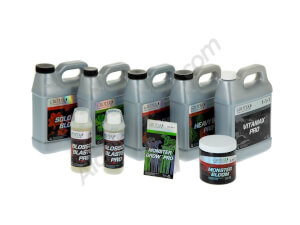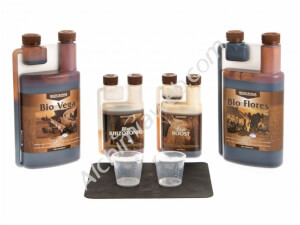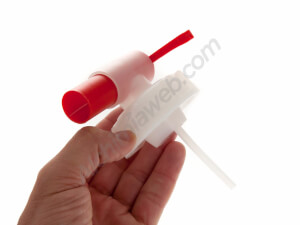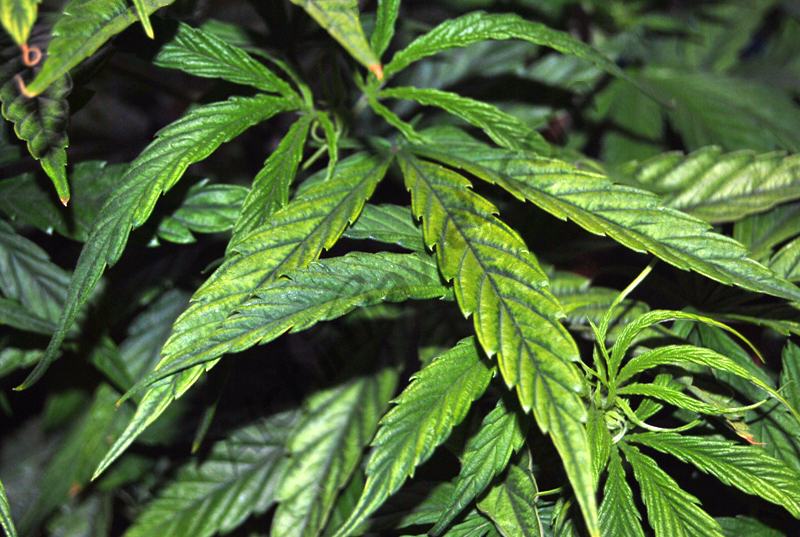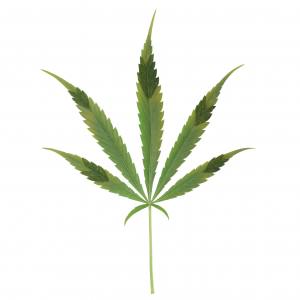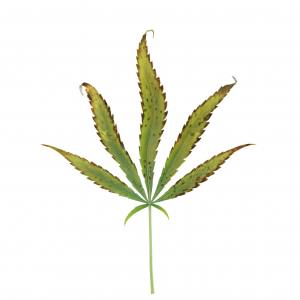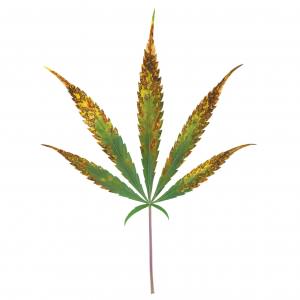Deficiency and excess of Iron in cannabis plants
List of contents
In the scenario of nutrition in agriculture, where each element plays a crucial role in the life of plants, iron is an essential actor in the development and vitality of plants, playing a fundamental role in processes as important as photosynthesis, the formation of chlorophyll, or resistance to environmental stress.
Today we invite you to discover the relationship between this element and your plants, as well as what you should do if they show any symptoms of a deficiency or excess of this important micronutrient.
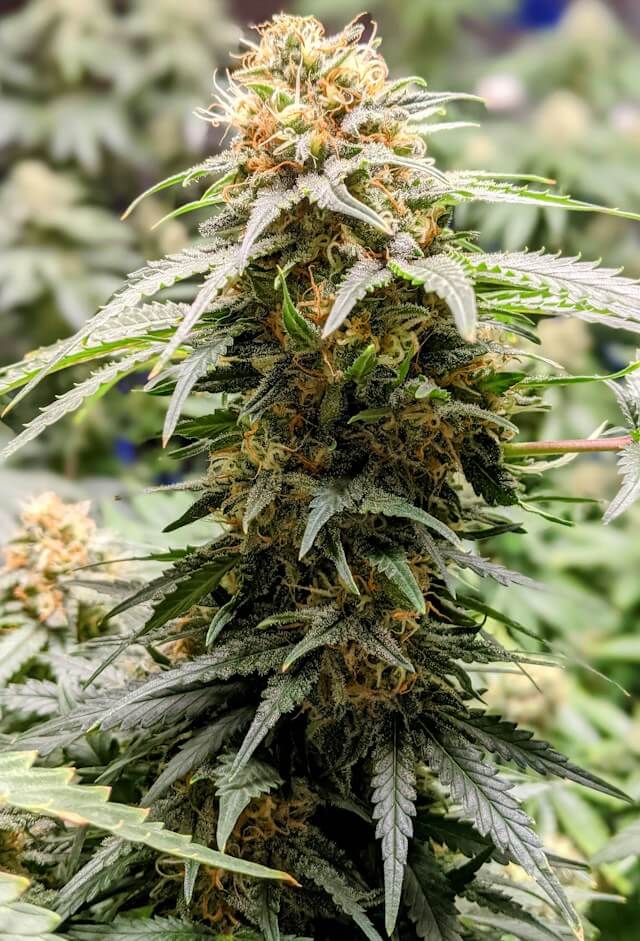
Iron in cannabis cultivation
Iron is not a mobile element, and although it is not part of chlorophyll, it does contribute to the pigmentation and respiration of the leaves of marijuana plants. In addition, it also interacts directly with the creation of enzymes. The plant can assimilate it in the form of ferric ion (Fe++) although it can also be absorbed in organic form.
Plants use different and varied mechanisms to absorb the iron that is in the substrate but that is presented in a format that is difficult for them to assimilate. The chelation mechanism, which is based on the creation of siderophores that come into contact with different bacteria, will make iron more usable for marijuana plants.
Another mechanism that plants use is to expel substances that reduce the pH of the substrate around their roots. It should be noted that younger roots can absorb iron better, so it will be very necessary to maintain a clean and cared-for root system for iron absorption to be effective.
As we have already mentioned, iron comes in various formats, with chelated iron being the one with the best absorption by plants. In this case, it should be noted that there are different types of chelates, each with greater resistance and stability depending on the conditions in which the substrate is found.
These chelates stabilize metal ions, improving their resistance to iron oxidation and helping them to not precipitate so easily. It should be said, however, that chelates can compete with other ions of other elements such as calcium and magnesium, which will displace iron ions.
Types of chelates:
- Fe-EDTA: This chelate is suitable for substrates with a pH less than 6.0. With a pH above 6.5, half of the Iron will not be available, so it will not be very functional.
- Fe-DTPA: This chelate is known to remain stable at pH 7.0 and not displace iron with calcium.
- Fe-EDDHA: This chelate remains stable up to pH 11.0 although it must be said that it is also the most expensive.

Iron deficiency in cannabis cultivation
In crops, deficiencies of this element are usually preceded by a pH value in the substrate greater than 7.0, in which the plant cannot absorb this element through its roots. Keep in mind that it cannot be absorbed in very alkaline or very calcareous soils either.
There are other reasons why iron stops being assimilated by the plant even when it is present in the substrate. These cases can be such as high levels of carbonates, high salinity, constant humidity, low temperatures, or excess of other microelements that cause their deficiency.
In this case, the youngest leaves, those at the highest part of the plant, will suffer iron chlorosis, keeping the veins green. If you do not act accordingly, the leaves will discolor, leaving the veins green.

Summary of the causes that cause iron deficiency:
- Lack of iron in the soil is possible although rare
- Immobilization of iron in an alkaline substrate can be caused by an excess of calcium or bicarbonate in the nutrient solution
- The presence of certain organisms that transform iron into ferrous oxide, which is not absorbable by plants.
- Interaction with other cations caused by an excess of manganese, copper, zinc… (heavy metals)
- Weak root system due to poor drainage, low temperatures, lack of oxygenation, etc.
- Excess light intensity
How to solve an iron deficiency in plants:
- Reduce the alkalinity of the substrate, providing sulfur, manure, and organic fertilizers along with fertilizers that acidify the substrate
- Provide iron chelates to the plant for rapid absorption in an optimal pH range
- Foliar dosage with iron sulfate to solve small deficiencies
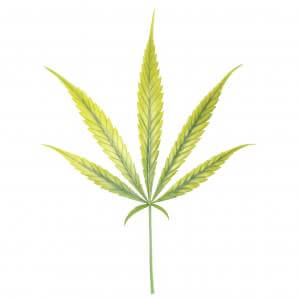
Excess iron in cannabis cultivation
Excess iron in plants can lead to specific symptoms. Here are some common signs of too much iron:
- Chlorosis and Yellowing of Leaves: Although iron is essential for the formation of chlorophyll, an excess can cause chlorosis, manifesting as yellowing of the leaves, especially between the veins.
- Root Damage: Excess iron in the soil can damage roots, affecting their ability to absorb nutrients and water.
- Reduced Growth: Excess iron can interfere with the absorption of other essential nutrients, which can result in decreased plant growth.
- Iron Accumulation on Leaves: There may be visible iron accumulation on the leaves, often as brown or red spots.
- Increased Susceptibility to Disease: Excess iron can make plants more susceptible to certain pests and diseases.
It is very important to monitor the health of the plants and adjust fertilizer doses as necessary to avoid problems associated with excess nutrients. Regular observation of the condition of the plants and the implementation of corrective measures will help maintain an optimal nutritional balance in your crop.
As always, if you have overfertilization problems, it is best to wash the roots with enzymes by watering with three times the amount of water in the volume of the pot, and then use a light fertilizer with the pH corresponding to the life stage of the plant.
Happy harvest!

















































